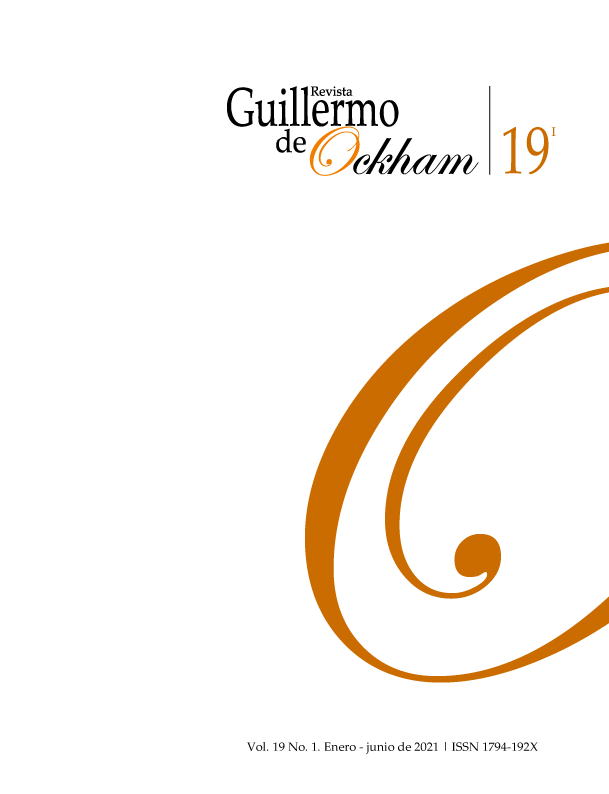The Revista Guillermo de Ockham provides an immediate and open access to its content, based on the principle of offering the public a free access to investigations to provide a global interchange of knowledge.
Unless otherwise established, the contents of this journal has a license with Creative Commons Attribution-NonCommercial-NoDerivatives 4.0 International (CC BY-NC-ND 4.0) http://creativecommons.org/licenses/by-nc-nd/4.0/
- Attribution: You must give appropriate credit, provide a link to the license, and indicate if changes were made. You may do so in any reasonable manner, but not in any way that suggests the licensor endorses you or your use.
- NonCommercial: You may not use the material for commercial purposes.
- NoDerivatives: If you remix, transform, or build upon the material, you may not distribute the modified material.
- No additional restrictions: You may not apply legal terms or technological measures that legally restrict others from doing anything the license permits.
Keywords:
References
Barry, J. (2004). The great Influenza: The Story of the Deadliest Pandemic in History. Penguin Books UK.
Espinoza, M. (2003). El triste destino del azar. Límite, (10). 1-23.
Kermack, W. O & McKendirck, A. G. (1927). A Contribution to the Mathematical Theory of Epidemics. Proceedings of the Royal Society A. 115, 700-721. https://doi.org/10.1098/rspa.1927.0118
Kwuimy, C.A.K., Nazari, F., Jiao, X., Rohani, P., Nataraj, C. (2020). Nonlinear dynamic analysis of an epidemiological model for COVID-19 including public behavior and government action. Nonlinear Dynamics, 101, 1545-1559. https://doi.org/10.1007/s11071-020-05815-z
Mandelbrot, B. (2002). Fractals, Graphics, and Mathematics Education. En Michael Frame y Benoit Mandelbrot (Eds.). 21-38. Fractals, Graphics, and Mathematics Education. Cambridge University Press.
Morin, E. (2009). Introducción al pensamiento complejo. Gedisa: Madrid
Munné, F. (2013). Perfecto e imperfecto: completo. Estudios sobre la complejidad. California-edit : Bogotá
Ossa, J. C. (2011). Un intextricable juego de pérdidas y ganancias. Acta Colombiana de Psicologia. (14)2. 45-55
Prigogyne, I. (1993). Les lois du chaos. Flammarion: Paris
Puche-Navarro, R. (2009). ¿Es La mente no lineal? Programa Editorial Universidad del Valle: Cali
Shoabib, M., Asif Zahoor Raja, M., Touseef Sabir, M., Hussain Bukhari, A., Alrabaiah, H., Sha, Z., Kuman, P., Islam, S., (2021). A stochastic numerical analysis based on hybrid NAR-RBFs networks nonlinear SITR model for novel COVID-19 dynamics. Computer Methods and Programs in Biomedicine. 202, 1-17. https://doi.org/10.1016/j.cmpb.2021.105973
Young, P. C., & Chen, F. (2021). Monitoring and forecasting the COVID-19 epidemic in the UK. Annual Reviews in Control. https://doi.org/https://doi.org/10.1016/j.arcontrol.2021.01.004.

































